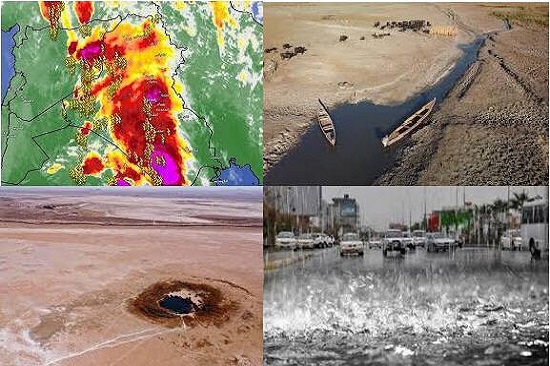|
Harvesting rainy seasons in the western region of Iraq
2024-06-29

With Iraq's official entry into the summer on 21-6-2024, and the end of the rainy season mostly, the Upper Euphrates Basin Developing Centre at the University of Anbar, as part of its climate change monitoring program, which comes in implementation of the university's strategic plan to achieve the sustainable development goals within Vision 2030, announced the latest statistics on rainfall rates for the last two seasons 2022-2023 and 2023-2024.
Statistics showed that the annual rainfall rate in the city of Ramadi for the season 2022-2023 reached (194) mm and the number of rainy days (28) days, and in Haditha (77.6) mm, with the number of rainy days (37) days, and in Rutba (105) mm, with (28) rainy days, and in about it the amount of rain reached (86.5) mm, and the number of rainy days (25) days, and in the existing the amount of rain reached (103.8) and the number of rainy days (23) days, in general the above figures indicate that this season is much better than the two seasons that preceded it, which The amount of rain and the number of rainy days were much less.
For the current season 2023-2024, statistics showed that the annual rainfall rate in the city of Ramadi reached (120.4) mm, the number of rainy days (31) days, in Haditha (99.9) mm, with the number of rainy days (42) days, in Rutba (152) mm, with (34) rainy days, in about which the amount of rain reached (151) mm, the number of rainy days (27) days, and in the existing the amount of rain reached (113.5) and the number of rainy days (23) days, the data in general indicate good rainfall rates compared to the years 2019-2020, 2020-2021, 2021-202.
In general, the above data are of great importance in determining drought and moisture cycles, and therefore the designs and operation of water and reservoir projects such as water harvesting projects, agricultural plans and the sustainability of water resources in the region, which is reflected in the development projects in it, and by reviewing the available data for rainfall rates in the region, especially for the last forty years, drought cycles reach (3-4) years in the Iraqi Western Desert region, according to researchers from the centre.
#university_of_anbar
#Upper_Euphrates_Basin_Developing_Center |